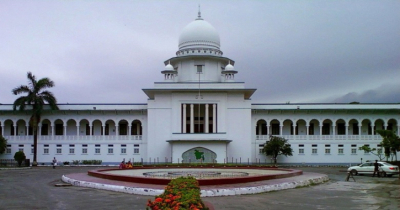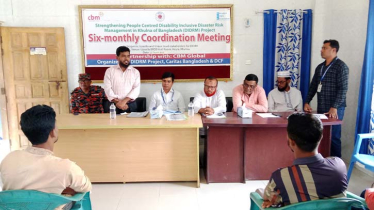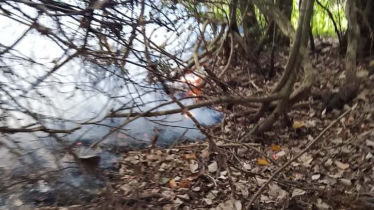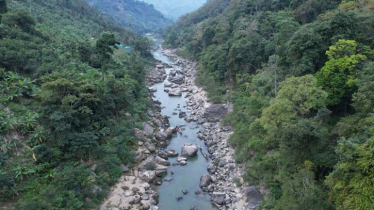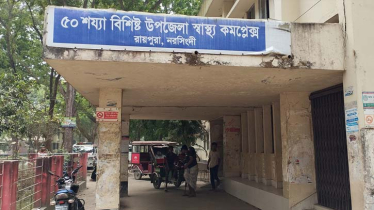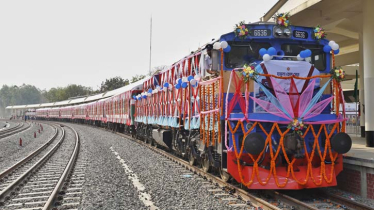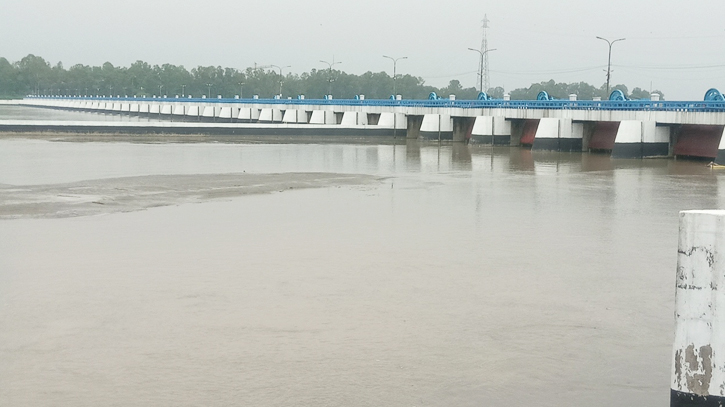
Photo : Messenger
Because of a severe lack of water, the banks of the Teesta River in Nilphamari, northern Bangladesh, now look like deserts, leading to a significant reduction in available farmland.
In 2021, the Teesta irrigation project managed 50,000 hectares of land, but by 2022, this had dropped to 43,000 hectares. This year, it increased slightly to 45,000 hectares, but it's still not back to the 2021 level.
Many people living in two areas of Nilphamari are affected by annual floods caused by landslides upstream in the Teesta. The monsoon season is a constant source of concern for those living near the river. At the start of the month, the Teesta was a lively river, but now it's become nearly lifeless due to the lack of water. The riverbed is covered in sand mounds and chars, making the Teesta look like a desert.
On October 4, the water level in the river was 7 cm above the danger level, with a water flow of 80,000 cusecs. Now, the water flow is down to 30-35 thousand cusecs, and you can only see sand on the river's surface. The water in the main river is sometimes knee-deep, sometimes waist-deep. This situation is forcing fishermen to consider stopping their fishing activities for the year. Boat operators who used to cater to visitors may also have to leave the riverbanks.
A local resident, Shah Alam, said that the sudden appearance of many chars in mid-September was due to the lack of upstream water. However, a surge of water from Sikkim raised the water levels this year. This provides more land for farmers to use, but it also threatens the jobs of many families. Proper management of the river is necessary, and if the master plan is effectively implemented, thousands of families can get their land back.
Sabuj Mia from the Dalia Purnjhar area shared that their village and neighboring areas used to rely on the Teesta irrigation project for farming. But in recent years, they've had to use electric motors for irrigation since there's not enough water in the canals. In contrast, India dams its rivers during the peak season for farming, leaving them struggling due to water shortages.
Raju Ahmed, from Purba Baishpukur village in Dimla upazila, explained that the canal will be the only source of irrigation soon, leaving the main river dry. They'll have to bring water from a distance for farming. When the monsoon comes again, the river will be full of water. This sharp difference between the two countries is striking.
Asfauddaulah, the Executive Engineer of the Dalia Water Development Board, emphasized the need for water for agriculture, with a demand for 700-800 cubic meters of water, while only 11-11.5 cubic meters are available this year.
Nazrul Islam Haqqani, a prominent figure in the 'Tista Bachao Nadi Bachao Sangram Parishad,' pointed out that a joint commission between the two countries is responsible for managing water resources.
He hopes the governments of both nations will ensure a fair distribution of water resources. The Teesta irrigation project in Bangladesh is facing mounting challenges primarily due to the Teesta's water scarcity. Long-term planning and effective river management practices are essential to address this issue.
Messenger/Disha

